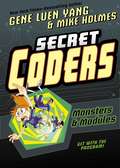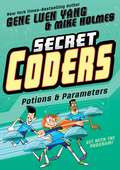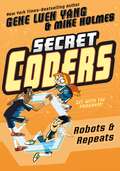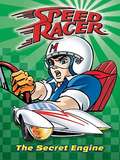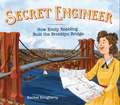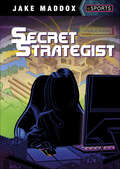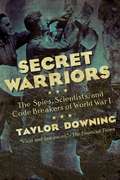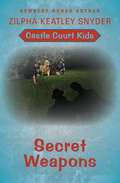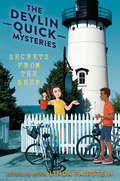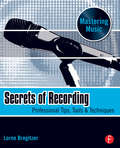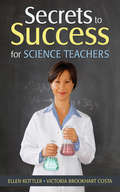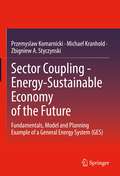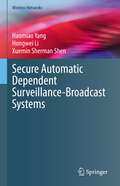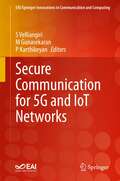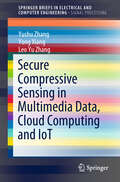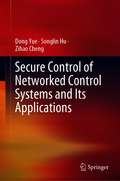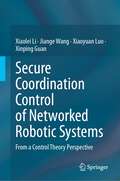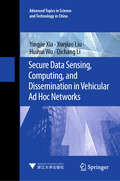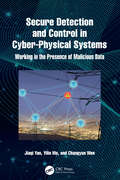- Table View
- List View
Secret Agent 666: Aleister Crowley, British Intelligence and the Occult
by Richard B. SpenceAleister Crowley is best known today as a founding father of modern occultism. His wide, hypnotic eyes peer at us from the cover of The Beatles' Sgt. Pepper's Lonely Hearts Club Band, and his influence can be found everywhere in popular culture.Crowley, also known as the Great Beast, has been the subject of several biographies, some painting him as a misunderstood genius, others as a manipulative charlatan. None of them have looked seriously at his career as an agent of British Intelligence.Using documents gleaned from British, American, French, and Italian archives, Secret Agent 666 sensationally reveals that Crowley played a major role in the sinking of the Lusitania, a plot to overthrow the government of Spain, the thwarting of Irish and Indian nationalist conspiracies, and the 1941 flight of Rudolf Hess.Author Richard B. Spence argues that Crowley--in his own unconventional way--was a patriotic Englishman who endured years of public vilification in part to mask his role as a secret agent.The verification of the Great Beast's participation in the twentieth century's most astounding government plots will likely blow the minds of history buff s and occult aficionados alike.Author Richard B. Spence can be seen on various documentaries on the History Channel and is a consultant for Washington, DC's International Spy Museum. He is also the author of Trust No One: The Secret World of Sidney Reilly (Feral House).
Secret Coders: Monsters & Modules (Secret Coders #6)
by Gene Luen YangFrom graphic novel superstar (and former computer programming teacher) and New York Times bestselling author Gene Luen Yang, Secret Coders: Monsters & Modules is the sixth and final volume in a wildly entertaining series that combines logic puzzles and basic coding instruction with a page-turning mystery plot!The Coders always knew their programming skills would take them far, but they never guessed they would take them to another dimension! Or to be accurate, one dimension less—to save humanity, Hopper, Eni, and Josh must travel to Flatland, a dangerous two-dimensional world ruled by polygons. If they can return home safely with a turtle of light, they might just stand a chance in their final showdown with Dr. One-Zero!
Secret Coders: Potions & Parameters (Secret Coders #5)
by Gene Luen YangFrom graphic novel superstar (and former computer programming teacher) and New York Times bestselling author Gene Luen Yang, Secret Coders: Potions & Parameters is the fifth volume in a wildly entertaining series that combines logic puzzles and basic coding instruction with a page-turning mystery plot!Dr. One-Zero won't stop until the whole town—no, the whole world—embraces the "true happiness” found in his poisonous potion, Green Pop. And now that he has the Turtle of Light, he’s virtually unstoppable.There's one weapon that can defeat him: another Turtle of Light. Unfortunately, they can only be found in another dimension! To open a portal to this new world, Hopper, Eni, and Josh's coding skills will be put to the test.
Secret Coders: Robots & Repeats (Secret Coders #4)
by Gene Luen YangDr. One-Zero has added a new class to Stately Academy's curriculum. But in "Advanced Chemistry," they only teach one lesson: how to make Green Pop! While their classmates are manufacturing this dangerous soda, the Coders uncover a clue that may lead them to Hopper's missing dad. Is it time to use Professor Bee's most powerful weapon: the Turtle of Light?From graphic novel superstar (and former computer-programming teacher) Gene Luen Yang, comes Robots & Repeats, the fourth volume of Secret Coders. This wildly entertaining series combines logic puzzles and basic coding instruction with a page-turning mystery plot!
Secret Engine, The #3
by Chase WheelerTongue Blaggard, the dastardly criminal, has stolen a Model T that once belonged to the crook Light Fighters Clepto. When Speed vows to recover the Model T, he learns Clepto's fortune. Can Speed stop Blaggard before he gets his dirty hands on the loot?
Secret Engineer: How Emily Roebling Built the Brooklyn Bridge
by Rachel DoughertyOn a warm spring day in 1883, a woman rode across the Brooklyn Bridge with a rooster on her lap. It was the first trip across an engineering marvel that had taken nearly fourteen years to construct. The woman's husband was the chief engineer, and he knew all about the dangerous new technique involved. The woman insisted she learn as well. When he fell ill mid-construction, her knowledge came in handy. She supervised every aspect of the project while he was bedridden, and she continued to learn about things only men were supposed to know:math,science,engineering.Women weren't supposed to be engineers. But this woman insisted she could do it all, and her hard work helped to create one of the most iconic landmarks in the world. This is the story of Emily Roebling, the secret engineer behind the Brooklyn Bridge, from author-illustrator Rachel Dougherty.
Secret Strategist (Jake Maddox eSports)
by Jake MaddoxJae Cho isn’t very good at games. Whether it’s board games, card games, or anything else, she usually doesn’t have much luck. But when she watches her brother, Dal, playing Castle Crusaders 5, she’s fascinated by the strategy of destroying the opponent’s forces and taking out the enemy’s castle. When Dal rushes off and leaves the game running on his computer, Jae can’t resist the temptation to try playing for herself. Before long she’s hooked on the game and secretly playing against others on her brother’s computer whenever she can. However, she soon realizes that she’s accidentally entered an online esports competition in her brother’s name! Will Dal be angry that Jae has been using his computer and played as him in the qualifying round? Or will he help his little sister dominate the competition at the tournament?
Secret Warriors: The Spies, Scientists and Code Breakers of World War I
by Taylor DowningA startling and vivid account of World War I that uncovers how wartime code-breaking, aeronautics, and scientific research that laid the foundation for much of the innovations of the twentieth century. World War I is often viewed as a war fought by armies of millions living and fighting in trenches, aided by brutal machinery that cost the lives of many. But behind all of this an intellectual war was also being fought between engineers, chemists, code-breakers, physicists, doctors, mathematicians, and intelligence gatherers. This hidden war was to make a positive and lasting contribution to how war was conducted on land, at sea, and in the air, and most importantly, life at home. Secret Warriors provides an invaluable and fresh history of the World War I, profiling a number of the key incidents and figures which lead to great leaps forward for the twentieth century. Told in a lively and colorful narrative style, Secret Warriors reveals the unknown side of this tragic conflict.
Secret Weapons (Castle Court Kids #4)
by Zilpha Keatley SnyderThe Castle Court Kids are back—and this time, they&’re teaming up to fight the bad guysKate Nicely and her BFF, Aurora Pappas, haven&’t told anyone about their top-secret science project that&’s going to win first place at the Annual Interschool Science Fair. Carlos Garcia, Bucky Brockhurst, and Eddy Wong are working on one, too, if they could just agree on an idea that isn&’t lame. But everyone could lose to Aurora&’s kid brother, Carson, and Eddy&’s younger brother, Web, who everyone at school knows is a genius. Does Web&’s secret project have something to do with the two sinister-looking men in a black van who&’ve been lurking around Castle Court? The rumors spread like wildfire: Web is developing some kind of secret weapon and terrorists are trying to steal it. That&’s when the Castle Court Kids decide to form the top-secret AT Club (that&’s Anti-Terrorist, of course). With the kids—and one enormous Saint Bernard—outnumbering the bad guys, all they have to do is wait for the perfect time to strike.This ebook features an extended biography of Zilpha Keatley Snyder.
Secretos del Planeta Tierra (Explanatorium of the Earth)
by DKUna completísima enciclopedia juvenil para explorar nuestro planeta de forma diferente.Emprende un increíble viaje al corazón de nuestro planeta y descubre cómo las placas tectónicasse separan y chocan, observa la erosión que sufre la Tierra a lo largo del tiempo, explora el interior de un volcán, aprende sobre el cambio climático y el calentamiento global y mucho más.¿Cuántos volcanes activos existen? ¿Qué provoca los tornados y los huracanes? ¿Cómo se forman las rocas, los fósiles y las gemas? ¿De qué se compone el aire?Con cantidad de datos curiosos e increíbles fotografías e imágenes de todo tipo de fenómenos, este libro ilustrado para niños responde a todas las preguntas sobre nuestro universo, ya se trate del origen de la vida en la Tierra, la atmósfera, los fósiles, los océanos o la actividad tectónica.Incluye datos asombrosos sobre geología, accidentes geográficos y paisajes, fósiles, rocas y minerales, climatología, el sistema solar y mucho más.Con explicaciones sencillas de más de 100 principios científicos: la materia, las reacciones, los materiales, las fuerzas, la energía, la vida y la Tierra.Impresionantes fotografías de primeros planos, además de increíbles imágenes macro, cortes transversales e imágenes tomadas con time-lapse, rayos X y ultravioleta.Un libro de consulta esencial en las bibliotecas familiares y el complemento perfecto para los trabajos escolares.Perfecto para niños a partir de 9 años interesados en las ciencias de la Tierra y los fenómenos naturales y meteorológicos.Un regalo especial que los niños guardarán como un tesoro.---------------------------------- Welcome to the Explanatorium of the Earth - the only Earth encyclopedia you'll ever need, with excellent photographs of everything from supervolcanoes to tsunamis. This Earth exploration book for kids aged 9-12 and beyond answers the biggest and smallest questions about our universe, whether it’s fossils, oceans, or geology. The Exploratorium of Earth brings science to life with striking photographic explanations, helping kids understand how the world works.This fact-filled encyclopedia for kids offers:An extensive earth science guide– explaining more than 100 scientific principles, including matter, reactions, materials, forces, energy, life, and Earth.Detailed, close-up photography, plus incredible macro images, cross-sections, exploded views, time-lapse, x-ray, and ultra-violet photography.What makes volcanoes erupt? Why are tornadoes and hurricanes so destructive? How do rocks, fossils, and gems form? Explanatorium of the Earth takes you on an incredible voyage deep into the heart of our planet and back to discover the powerful forces that continually shape and remodel our ever-changing world. Discover how tectonic plates tear apart and cause earthquakes. Learn how the slow but relentless process of erosion and weathering wears away rock, reducing mountains to dust and carving valleys and canyons into the land. And learn how the living world and rock cycles have worked together for millions of years to stabilize the planet's climate, keeping Earth suitable for life.Are you interested in other subjects? Explore more from the Explanatorium series, such as Explanatorium of History, Explanatorium of Nature, and Explanatorium of Science.
Secrets Of The Garden: Food Chains And The Food Web In Our Backyard
by Kathleen Weidner ZoehfeldPerfect for spring planting season--an outstanding book about backyard science the whole family will appreciate. <P><P> Alice's family plants a vegetable garden each spring, and this budding naturalist reports all she sees about how the plants grow, what insects come to eat the plants, and what birds and animals come to eat the insects It's the food chain, right in her own backyard! While Alice's narrative is simple and engaging, science concepts are presented in more depth in sidebars by a pair of very knowledgeable (and highly amusing) chickens! Noted science writer Kathleen Weidner Zoehfeld knows how to layer information to make it accessible to a wide range of readers and useful for educators. And illustrator Priscilla Lamont's funny, friendly paintings make this a garden everyone will want to explore. Kids will eat up this wonderful book of backyard science--and perhaps they'll even be inspired to eat their vegetables! "A wonderfully informative and enjoyable journey through one family's backyard garden, from spring planting to fall harvest. . . . this is bound to spark some backyard explorations. " --Kirkus, Starred Review From the Hardcover edition.
Secrets from the Deep (Devlin Quick Mysteries, The #3)
by Linda FairsteinIn the third Devlin Quick adventure from internationally bestselling author Linda Fairstein, Dev goes to Martha's Vineyard for rest, relaxation...and a hidden pirate treasure!It's the end of summer, and Devlin Quick is invited to join her best friend Booker's family on vacation at their summer home in Martha's Vineyard. Booker has a science project for school: to take a daily bucket of water from the Vineyard Sound and submit a sample to an oceanographic DNA lab. From that, they can actually tell you what species of fish have been in those waters: striped bass, blues...and sharks! But Devlin comes up with something else in her bucket from the days when pirates hid treasures along New England coastline. With access to the crime DNA lab back in NYC (courtesy of her mother), Dev is going to solve the mystery of this treasure...and figure out all of the secrets Martha's Vineyard is hiding.
Secrets of Recording: Professional Tips, Tools & Techniques
by Lorne BregitzerPacked with all the studio tips and tricks you'll need it's easier than ever to create pro-quality music at home. This book is the only reference you'll ever need to start producing and engineering your music, or other artists' music, in your own home studio. Covering less than ideal acoustics, solving problems before they occur, tools of the editing phase and much more you can gain the knowledge and know how to make your recordings sound like pro recordings- understand the technology, use it in the right way and you can make a good recording great.
Secrets of Silicon Valley: What Everyone Else Can Learn From the Innovation Capital of the World
by Deborah Perry PiscioneWhile the global economy languishes, one place just keeps growing despite failing banks, uncertain markets, and high unemployment: Silicon Valley. In the last two years, more than 100 incubators have popped up there, and the number of angel investors has skyrocketed. Today, 40 percent of all venture capital investments in the United States come from Silicon Valley firms, compared to 10 percent from New York. In Secrets of Silicon Valley, entrepreneur and media commentator Deborah Perry Piscione takes us inside this vibrant ecosystem where meritocracy rules the day. She explores Silicon Valley's exceptionally risk-tolerant culture, and why it thrives despite the many laws that make California one of the worst states in the union for business. Drawing on interviews with investors, entrepreneurs, and community leaders, as well as a host of case studies from Google to Paypal, Piscione argues that Silicon Valley's unique culture is the best hope for the future of American prosperity and the global business community and offers lessons from the Valley to inspire reform in other communities and industries, from Washington, DC to Wall Street.
Secrets of the Sea: The Story of Jeanne Power, Revolutionary Marine Scientist
by Evan GriffithThe curiosity, drive, and perseverance of the nineteenth-century woman scientist who pioneered the use of aquariums to study ocean life are celebrated in this gorgeous, empowering picture book.How did a nineteenth-century dressmaker revolutionize science? Jeanne Power was creative: she wanted to learn about the creatures that swim beneath the ocean waves, so she built glass tanks and changed the way we study underwater life forever. Jeanne Power was groundbreaking: she solved mysteries of sea animals and published her findings at a time when few of women&’s contributions to science were acknowledged. Jeanne Power was persistent: when records of her research were lost, she set to work repeating her studies. And when men tried to take credit for her achievements, she stood firm and insisted on the recognition due to her.Jeanne Power was inspiring, and the legacy of this pioneering marine scientist lives on in every aquarium.
Secrets to Success for Science Teachers
by Ellen Kottler Victoria B. CostaProvides teachers with practical ideas and strategies for promoting inquiry, building literacy, implementing technology, and achieving meaningful instruction in the science classroom.
Sector Coupling - Energy-Sustainable Economy of the Future: Fundamentals, Model and Planning Example of a General Energy System (GES)
by Zbigniew A. Styczynski Przemyslaw Komarnicki Michael KranholdThe core of the book is the presentation of a systematic, continuous and logical chain into the coupled total energy system (GES) of the future, which will lead to the fully sustainable use of renewable energies. Thus, unified models are proposed that are applicable to the subsystems/sectors throughout and allow the optimization of the entire GES. Appropriate algorithms and approaches are illustrated with numerous examples. This is embedded in the context of efforts to fully integrate energy generated from renewable sources into the GES. The overarching role of IT systems for secure operations has been emphasized in the book. The relevance of the correct mapping of technologies to use cases is elaborated and necessary steps derived from this are considered technically and organizationally (standardization). Special attention is paid to the didactic presentation of the material in order to present this new, difficult and complex problem "as simple as possible, but not simpler" [according to Einstein].
Secure Automatic Dependent Surveillance-Broadcast Systems (Wireless Networks)
by Xuemin Sherman Shen Hongwei Li Haomiao YangThis book proposes secure schemes to address security challenges in secure automatic dependent surveillance-broadcast systems (ADS-B) from five different angles. First, the authors examine encryption schemes applied to the ADS-B environment for protecting messages confidentiality. Second, they propose an ADS-B broadcast authentication scheme with batch verification by employing an identity-based signature. Third, they present ADS-B broadcast authentication scheme based on a digital signature with message recovery, which provides a feature that the message is recoverable from the signature. Fourth, they propose a new cryptographic solution to ADS-B security. Finally, they propose an accurate and efficient cognitive aircraft location verification scheme preserving aircraft location privacy by utilizing a grid-based k-nearest neighbor algorithm. In summary, the authors show how ADS-B data links can greatly enhance flight safety by these proposed schemes without sacrificing data security.Proposes several secure schemes to address security challenges in secure automatic dependent surveillance-broadcast systems (ADS-B);Provides extensive experiments and evaluates the proposed schemes using real-world data;Shows how ADS-B data links can greatly enhance safety without sacrificing data security
Secure Communication for 5G and IoT Networks (EAI/Springer Innovations in Communication and Computing)
by S. Velliangiri P. Karthikeyan M. GunasekaranThis book highlights research on secure communication of 5G and the Internet of Things (IoT) Networks, along with related areas to ensure secure and Internet-compatible IoT systems. The authors not only discuss 5G and IoT security and privacy challenges, but also energy efficient approaches to improving the ecosystems through communication. The book addresses the secure communication and privacy of the 5G and IoT technologies, while also revealing the impact of IoT technologies on several scenarios in smart city design. Intended as a comprehensive introduction, the book offers in-depth analysis and provides scientists, engineers and professionals the latest techniques, frameworks and strategies used in 5G and IoT technologies.
Secure Communication in Internet of Things: Emerging Technologies, Challenges, and Mitigation
by T. Kavitha Prasidh Srikanth M. K. Sandhya V. J. SubashiniThe book Secure Communication in Internet of Things: Emerging Technologies, Challenges, and Mitigation will be of value to the readers in understanding the key theories, standards, various protocols, and techniques for the security of Internet of Things hardware, software, and data, and explains how to design a secure Internet of Things system. It presents the regulations, global standards, and standardization activities with an emphasis on ethics, legal, and social considerations about Internet of Things security. Features:● Explores the new Internet of Things security challenges, threats, and future regulations to end-users.● Presents authentication, authorization, and anonymization techniques in the Internet of Things.● Illustrates security management through emerging technologies such as blockchain and artificial intelligence.● Highlights the theoretical and architectural aspects, foundations of security, and privacy of the Internet of Things framework.● Discusses artificial-intelligence-based security techniques, and cloud security for the Internet of Things.It will be a valuable resource for senior undergraduates, graduate students, and academic researchers in fields such as electrical engineering, electronics and communications engineering, computer engineering, and information technology.
Secure Compressive Sensing in Multimedia Data, Cloud Computing and IoT (SpringerBriefs in Electrical and Computer Engineering)
by Yong Xiang Yushu Zhang Leo Yu ZhangThis book gives a comprehensive and systematic review of secure compressive sensing (CS) for applications in various fields such as image processing, pattern recognition, Internet of things (IoT), and cloud computing. It will help readers grasp the knowledge of secure CS and its applications, and stimulate more readers to work on the research and development of secure CS. It discusses how CS becomes a cryptosystem, followed by the corresponding designs and analyses. The application of CS in multimedia data encryption is presented, in which the general design framework is given together with several particular frameworks including parallel CS, involvement of image processing techniques, and double protection mechanism. It also describes the applications of CS in cloud computing security and IoT security, i.e., privacy-preserving reconstruction in cloud computing and secure low-cost sampling in IoT, respectively.
Secure Control of Networked Control Systems and Its Applications
by Dong Yue Songlin Hu Zihao ChengThis book shows some secure control methods of networked control systems related to linear control system, nonlinear control system, multi-agent system and its applications in power systems. The proposed secure control methods provide some useful results about modeling of network attacks, resilient analysis and synthesis methods, active defense control method.The contents of this book are lists as followings. (1) Modeling of DoS attacks, deception attacks and replay attacks; (2)Secure control methods are proposed by combing delay system method, switched system method and event-based control method. (3) Active control methods are proposed by using model-predictive control and redundant control. (4) The proposed control methods are applied to the security problem of power system.The methods of this book include DoS attacks modeling such as, periodic jamming attack model,model-based average dwell time model, deception attack modeling and relay attack modeling; piece-wise Lyapunov-Krasoviskiifunctional method, stochastic control method; the results including resilient conditions of networked control system and related resilient control design method with linear matrix inequalities(LMIs).From this book, readers can learn about the general network attack modeling methods, resilient analysis and synthesis methods, active control methods from viewpoint of redundancy control, and secure conditions of power systems.Some fundamental knowledge prepared to read this book includes delay system theory, event triggered mechanism, T-S fuzzy system theory and frequency/voltage control of power system.
Secure Coordination Control of Networked Robotic Systems: From a Control Theory Perspective
by Xinping Guan Xiaolei Li Xiaoyuan Luo Jiange WangAs one of the core equipments and actuators, robotic technology has attracted much attention and has made great progress. However, a single robotic system is often unable to handle complex tasks due to limitations in sensors, microprocessors, actuators, and the ability to handle complex situations. With the development of distributed control and microprocessing technology, networked robotic systems have greatly expanded their perceptual, computational, and execution capabilities, with high efficiency, low cost, and strong functionality advantages. As a typical distributed cyber-physical system (DCPS), which is an intelligent system that integrates computing, communication, and control, networked robotic systems can perform higher-level tasks by sharing information and working together. It can provide intelligent control and monitoring of a physical process, such as environment observation, information collection, and search and rescue, etc. Thus, coordination control of networked robotic systems has become the focus of scholars worldwide. However, the sensing, communication, and control integration of networked robotic systems make them face unprecedented network security threats, in which cyber attacks have become a major hidden danger to the reliable operation of autonomous unmanned systems. Although existing control methods can achieve swarm collaborative control of networked robotic systems, the protection of which, especially the security of control systems, is rarely addressed. In this book, we conduct research on the secure coordination problem of networked robotic systems from a control theory perspective, given the limited communication bandwidth and the increasingly prominent network security threats. This book showcases several continuous-time and event-triggered secure control design and analysis methods for networked robotic systems under different types of cyberattacks. Additionally, several future research directions are provided for networked robotic systems. This book will be an important reference for scientists, engineers, and graduate students from the field of underwater robotic technologies, maritime science, and control engineering.
Secure Data Sensing, Computing, and Dissemination in Vehicular Ad Hoc Networks (Advanced Topics in Science and Technology in China #1)
by Yingjie Xia Xuejiao Liu Huihui Wu Qichang LiThis book focuses on the fields of security of vehicular ad hoc networks (VANETs). Building upon previous research findings, it conducts research on three modules: secure data sensing, computing, and dissemination in VANETs. The book adopts a combination of security analysis, theoretical analysis, and simulation analysis to comprehensively evaluate and demonstrate the effectiveness and performance of proposed solutions. It aims to assist other researchers in conducting studies on the data security issues of vehicular ad hoc networks, while designing secure and efficient schemes.
Secure Detection and Control in Cyber-Physical Systems: Working in the Presence of Malicious Data
by Changyun Wen Jiaqi Yan Yilin MoIn this pioneering reference work, Drs. Yan, Mo, and Wen explain secure detection and control algorithms for cyber-physical systems; describe their history and development, recent advances, and future trends; and provide practical examples to illustrate the topic.Secure Detection and Control in Cyber-Physical Systems: Working in the Presence of Malicious Data presents readers with the basic concepts of cyber-physical systems, secure detection, and control theory, and explanations of new designs for secure detection and control algorithms that can provide acceptable system performance in the presence of attacks. The authors combine recent research results with a comprehensive comparison of such algorithms and provide ideas for future research. They also provide a concise overview of the state-of-the-art cyber-physical system security in a systems and control framework. Content is presented throughout in plain text with equations. Tables and charts are also included to complement the descriptions of the algorithms and aid reader's understanding. Throughout, the authors also present practical examples to illustrate the main ideas. Through this book, readers will gain a comprehensive understanding of the field, including its history, recent advances, and future trends. Readers will be able to apply the relevant algorithms to cyber-physical systems in various contexts – such as aerospace, transportation, power grids, and robotics – and enhance their resiliency to attacks.This book is vital for researchers and engineers who are researching and working in the fields of cyber-physical systems, secure detection, control theory, and related topics. It is also hugely beneficial for students in the fields of information technology, control systems, or power systems. Readers should have a basic understanding of linear algebra, convex optimization, and stochastic processes.

